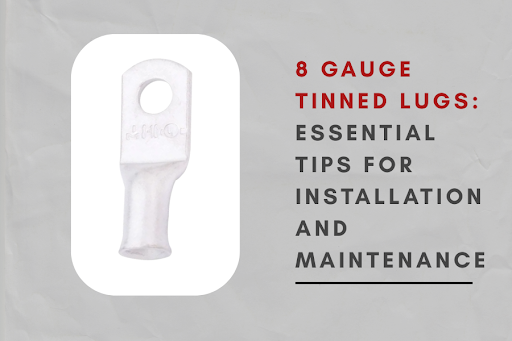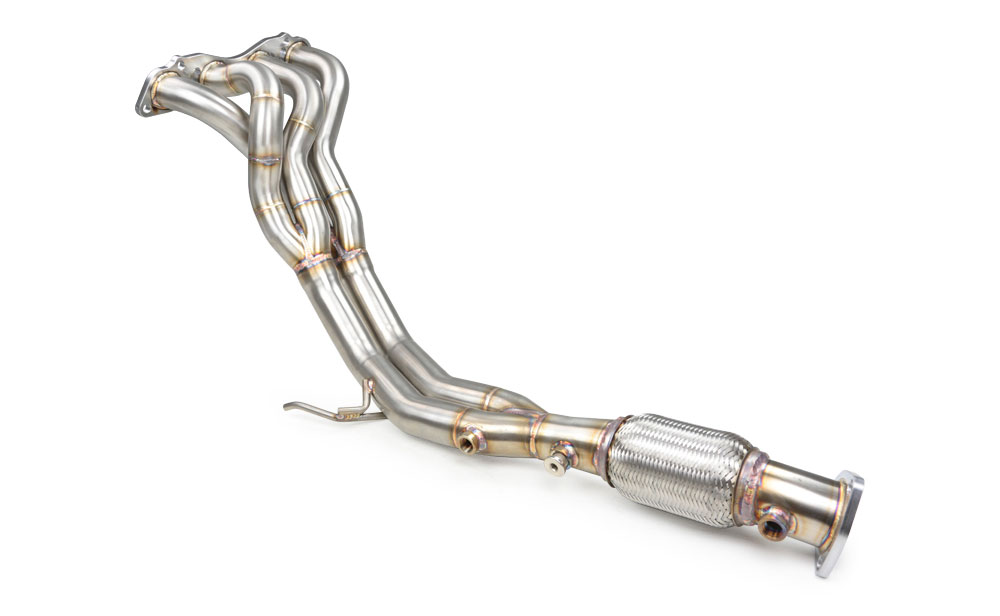The success of electrical systems depends on the performance of their smallest components. The durability of your connection depends on the appropriate connector selection when you are working with marine wiring, car modifications, or solar projects.
The combination of excellent conductivity and corrosion resistance makes 8 gauge tinned lugs a preferred option for harsh and high-performance environments.
Let’s break down what makes these 8 gauge tinned copper lugs so reliable, and how to install and maintain them for long-term performance.
Why Choose 8 Gauge Tinned Lugs?
Tinned copper lugs are preferred over bare copper in environments exposed to moisture, humidity, or salt air. The tin coating acts as a protective barrier, preventing oxidation and corrosion, while maintaining the high conductivity of copper. This makes them especially useful in:
- The marine industry requires copper protection from saltwater due to the rapid deterioration that occurs to unprotected copper materials.
- Solar power systems, where connections face constant heat and environmental stress.
- Automotive setups, where vibration and temperature shifts are common.
- DIY electrical projects, where reliability and safety matter.
Tinned lugs provide both performance and protection. This makes them suitable for all setups that need durable components.
Key Benefits Of 8 Gauge Tinned Copper Lugs
Superior Conductivity:
The lugs consist of pure copper which enables them to conduct electricity with high efficiency because of their low resistance.
- Corrosion Resistance:
The tin plating serves to protect against oxidation by creating a protective layer. This functions well in damp environments and saltwater areas.
- Strong Mechanical Grip:
The crimping process creates a secure connection between tinned lugs which maintains its stability against vibrations.
- Easy Identification:
The “8 gauge” sizing ensures compatibility with standard 8 AWG wires — easy to identify and match.
- Versatile Applications:
The product functions well in vehicles, as well as boats, solar power systems, recreational vehicles, and off-grid power systems.
How To Install 8 Gauge Tinned Lugs Correctly
The quality of installation determines how well a connection functions over time. The following instructions lead to a precise and professional installation:
- Strip the Cable:
Strip the insulation until the wire strands become visible while keeping both ends intact. The length of stripped wire should match the depth of the lug barrel.
- Insert the Wire into the Lug:
The wire should be inserted into the lug barrel completely until it reaches its final position. Verify that no copper strands extend beyond the barrel opening.
- Crimp Securely:
The recommended method is to use either a hydraulic crimper or a heavy-duty crimper to create uniform pressure throughout the lug. The use of hammer-style crimpers creates weak areas during the crimping process.
- Inspect the Connection:
Examine the connection to make sure the wire maintains a firm attachment while being pulled. The crimp needs to maintain a consistent appearance throughout its length.
- Seal the Joint (Optional but Recommended):
Use either heat shrink tubing or adhesive-lined heat shrink to protect the lug-barrel area from moisture, while providing insulation benefits.
- Bolt It Down:
Secure the lug onto the terminal or stud with proper tightness. Avoid excessive torque since it might harm the wire or the lug.
Maintenance Tips For Long-Term Durability
Even the best installation needs regular maintenance to stay in top condition. Here’s how to make your 8 gauge tinned lugs last:
- Inspect Periodically:
Examine outdoor and marine electrical systems for rust, color changes, and unstable connections.
- Clean When Needed:
The surface needs to be cleaned with a wire brush or contact cleaner when oxidation occurs.
- Re-tighten Connections:
The vibrations which occur over time will cause the terminal connections to become loose. Make sure all bolts stay snug and secure.
- Avoid Excess Heat:
Electrical circuits that carry too much current will cause their connection points to become excessively hot. This can lead to damage to the connection or its complete melting. Always size wires and lugs appropriately for the current load.
- Use Protective Covers:
Rubber boots and terminal caps serve to block unintentional electrical contact while keeping out dirt and water. The following steps will help you maintain safe and stable electrical connections, which will last for many years.
Common Mistakes To Avoid
Users with advanced knowledge still tend to create basic mistakes which decrease lug performance. These common problems should be avoided:
- Choosing the Wrong Lug Size:
The wire gauge must always match the lug size, so an 8 AWG wire should connect only with an 8 AWG lug.
- Poor Crimping Tools:
The combination of weak and uneven crimping leads to arcing and overheating problems. Always use the correct crimping die.
- Skipping Heat Shrink:
The connection will develop corrosion problems when left unprotected in marine and outdoor environments.
- Neglecting Routine Checks:
The process of corrosion spread occurs at a fast rate when minimal corrosion exists in environments with high humidity levels.
Secure Your Connections With 8 Gauge Tinned Lugs
The reliability of your electrical setup depends on the quality of every connection point. The use of 8 gauge tinned lugs provides both excellent electrical conductivity and strong resistance to corrosion in all types of environmental conditions. The correct installation and maintenance methods will determine the success of your boat wiring, solar system setup, and automotive project.
Ready to upgrade your connections? Check out Selterm’s 8 gauge tinned copper lugs for safe, durable, and professional-grade performance.




